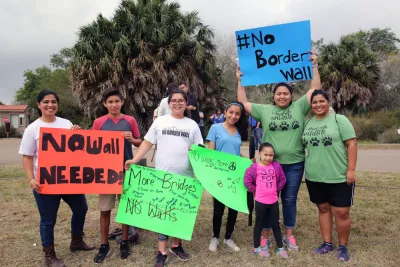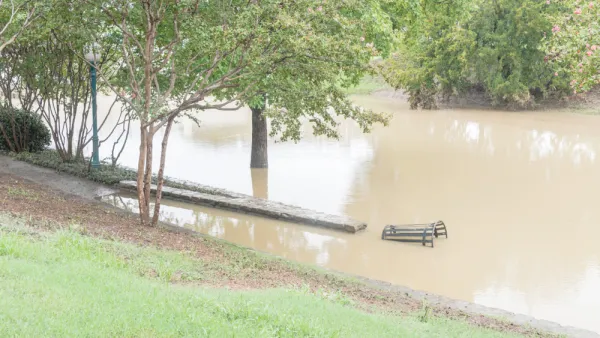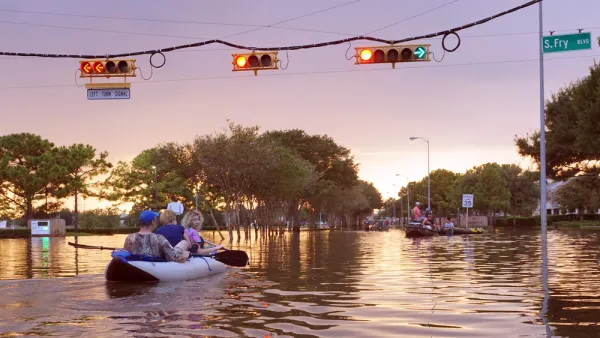The devastation that communities in the Rio Grande Valley face is twofold: the initial destruction of the floods and the cycle of debt and poverty as a result of predatory loans.

The Rio Grande Valley, the southernmost tip of the Texas-Mexico border has made headlines for poverty, immigration and, more recently, the outsized impact of COVID-19 on an already vulnerable population. What is more rarely discussed, however, are the systemic issues at play that mire the Rio Grande Valley, and particularly the informal settlements known as colonias, in a cycle of destruction from which it is difficult to break free. These systemic issues include vulnerability to environmental hazards, especially flooding, ignorance (or apathy) on the part of the federal government, and a model of housing rehab finance that harms those that desperately need support.
In December 2019, I collaborated with local nonprofit organizations as part of my master’s thesis research. I facilitated focus groups and conducted interviews with those who had suffered from floods in the colonias of the Rio Grande Valley. Colonias are informal communities along the U.S.-Mexico border characterized by high poverty rates, low-quality housing and little public infrastructure. These communities are often developed illegally by predatory housing developers that build on semi-rural land in floodplains and the people who live in them are overwhelmingly Mexican and Mexican American.
Historically, colonias developed in the 1980s and ’90s as an affordable way for low-income families to buy land outside of large border cities; now, colonias continue to develop as population pressures increase the cost of housing along the border. The vast majority of colonias are in Texas, and the Rio Grande Valley is home to thousands of them. My research reveals an interconnected system of marginalization in which families, seeking to repair and replace flood-damaged property, turn toward predatory lenders, including payday lenders and car title lenders. As a consequence of these small yet high-interest loans, families are unable to fully recover from these all-too-common floods. This forces many to prioritize bare necessities over repairs. The damaged and destroyed homes commonly produce negative public health effects.
How is this possible?
Left Behind in the Floods
The unique experience of flooding in the Rio Grande Valley is a combination of environmental racism, failed policy, and a financial system that excludes the poor. Indeed, flooding isn’t uncommon, especially in the era of a rapidly changing climate. I spoke with almost 40 individuals and families across the Rio Grande Valley, from whom I learned that they not only experience flooding seasonally, but that the flooding is becoming worse. Unfortunately, there is very little ...
FULL STORY: Flooded: How Natural Disasters Lead to Predatory Lending in the Rio Grande Valley

National Parks Layoffs Will Cause Communities to Lose Billions
Thousands of essential park workers were laid off this week, just before the busy spring break season.

Retro-silient?: America’s First “Eco-burb,” The Woodlands Turns 50
A master-planned community north of Houston offers lessons on green infrastructure and resilient design, but falls short of its founder’s lofty affordability and walkability goals.

Delivering for America Plan Will Downgrade Mail Service in at Least 49.5 Percent of Zip Codes
Republican and Democrat lawmakers criticize the plan for its disproportionate negative impact on rural communities.

Test News Post 1
This is a summary

Test News Headline 46
Test for the image on the front page.

Balancing Bombs and Butterflies: How the National Guard Protects a Rare Species
The National Guard at Fort Indiantown Gap uses GIS technology and land management strategies to balance military training with conservation efforts, ensuring the survival of the rare eastern regal fritillary butterfly.
Urban Design for Planners 1: Software Tools
This six-course series explores essential urban design concepts using open source software and equips planners with the tools they need to participate fully in the urban design process.
Planning for Universal Design
Learn the tools for implementing Universal Design in planning regulations.
EMC Planning Group, Inc.
Planetizen
Planetizen
Mpact (formerly Rail~Volution)
Great Falls Development Authority, Inc.
HUDs Office of Policy Development and Research
NYU Wagner Graduate School of Public Service





























